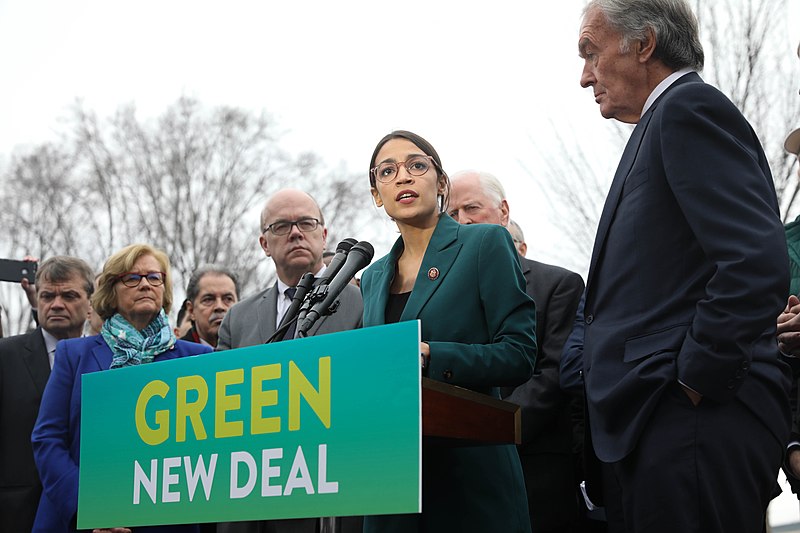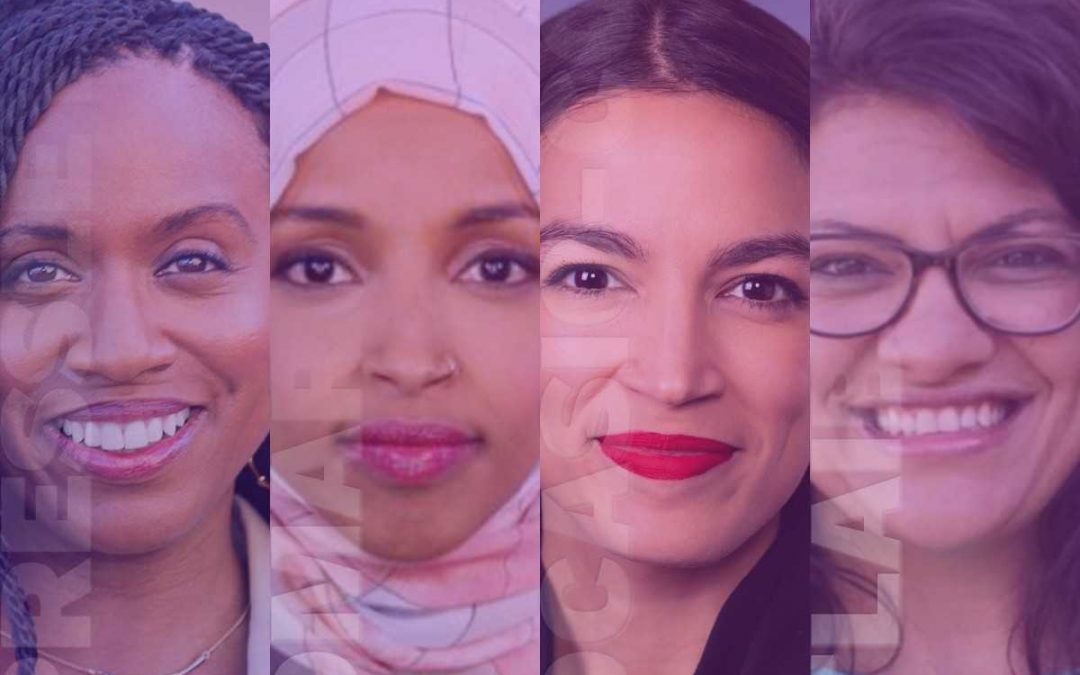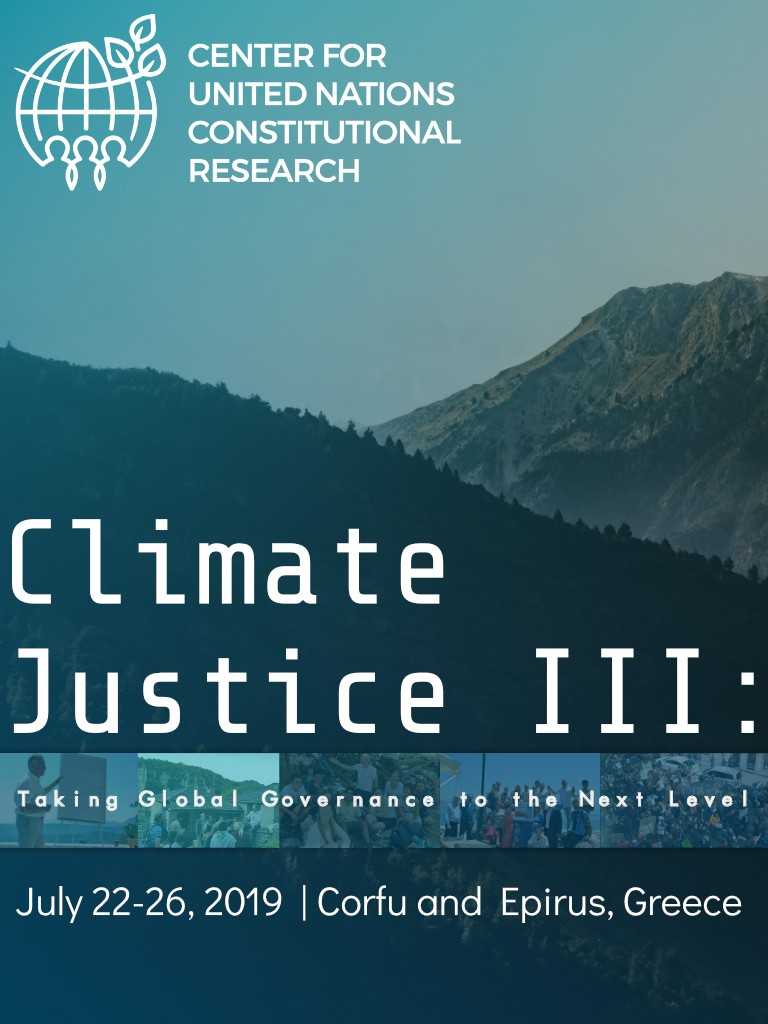Rep. Ayanna Pressley
REP. ILHAN OMAR
REP. ALEXANDRIA OCASIO-CORTEZ
Rep. Rashida Tlaib
The world federalist vision includes equal rights with no discrimination on grounds of race, color, caste, nationality, gender, religion… (Article 12.1, Earth Constitution)
Sonali Kolhatkar
Co-Founder | Afghan Women’s Mission
Although Congress over time has become more diverse and more representative of the demographics of the nation, the 115th Congress was still mostly white, older, male and Christian. Then, last November, a record number of women and people of color—and especially women of color—ran for election and won office, largely in response to the white nationalist resurgence. The most visible members of this new source of diversity—young, radical, black and brown women, with none of the boys club backing or Wall Street support their congressional colleagues rely on—are fast becoming the most outspoken leaders and the biggest targets of anger and resentment.
Who’s afraid of New York’s Alexandria Ocasio-Cortez, Minnesota’s Ilhan Omar, Michigan’s Rashida Tlaib and other congressional women of color? It turns out that President Donald Trump is, along with many rank-and-file Republicans. A large part of the Democratic Party is, too.
Perhaps no one embodies the anxieties of the establishment as completely as Ocasio-Cortez. The 29-year-old represents so many things Trump’s supporters fear. She is a young woman. She is brown-skinned. She espouses the politics of a long-ignored liberal and progressive faction in the nation. And she is unafraid. Her introduction of a Green New Deal (GND) resolution has offered great fodder for Republicans, who have done everything they can to mischaracterize it. Trump, in his Conservative Political Action Conference speech, pretended the GND would mean “[n]o planes, no energy. … When the wind stops blowing, that’s the end of your electric[ity].” And Republicans this week plan to slam the resolution as “nonsense on stilts” and a “vehicle for socialists policies that have nothing to do with climate change.”
But it hasn’t been enough to attack her policies. Ed Rollins, chair of a political action committee backing Trump, earlier this year called Ocasio-Cortez “the little girl who wants to do Reagan, pre-Reagan economics and 70 percent taxes.” White House counselor Kellyanne Conway echoed this type of infantilizing comment, calling Ocasio-Cortez a “29-year-old congresswoman who doesn’t seem to know much about anything when you ask her basic concepts about the economy, or the Middle East, or military funding.” Most recently, Republican billionaire Barnard Marcus’s group—unironically called the Job Creators Network—funded billboards in New York City claiming that Ocasio-Cortez considers herself “the boss” because of her backing of the GND. This naked attempt at emasculating the public plays on the misogynist vulnerabilities of Trump’s base.
There is a disturbing quality to the Ocasio-Cortez haters’ obsession. Conservative social media users have spread fake photos of her, freaked out about her dancing in a video during her college years, focused on her rent, her previous job as a bartender and other personal details.
Even fellow Democrats have felt threatened by the young congresswoman. House Speaker Nancy Pelosi has slammed the Green New Deal multiple times. Even before Trump referred to it in his CPAC speech as “the new green deal, or whatever the hell they call it,” Pelosi had used similarly dismissive language, saying in an interview, “The green dream or whatever they call it, nobody knows what it is, but they’re for it, right?”
What is World Federalism?
World Federal Government (WFG)


THE SAN FRANCISCO PROMISE
Click to Learn More

The second favorite target among the newly seated congressional women of color appears to be Omar. The young Somali-American immigrant was attacked even before she was elected to Congress, in a manufactured right-wing controversy about her marriage. More recently, she came under fire from both parties over her comments that the pro-Israel lobby holds sway over lawmakers. Republicans in West Virginia displayed a billboard of the 9/11 terror attacks with Omar’s face and the words, “‘Never forget’—you said … I am the proof—you have forgotten.” The poster was taken down, but it was clearly a call to threats against Omar. Perhaps even worse, Omar’s own colleagues in the Democratic Party are so outraged by her comments that they attempted to bring a vote on a House resolution over anti-Semitism—which they have not seen fit to do over the relentless racism and Islamophobia coming from Republicans and the president.
Tlaib has also come under fire for her views on the Israeli-Palestinian issue and for associating with Palestinian rights activists. She was roundly criticized for using coarse language in discussing the impeachment of Trump. And during the recent Michael Cohen hearings, her accusation that Rep. Mark Meadows used a racist tactic to “prove” Trump was not racist was met with vociferous denunciations. Longtime congresswomen of color, such as California’s Maxine Waters, have experienced white racial resentment and Trump’s targeting for even longer than the newer lawmakers. You can trace the history of congressional women of color being abused all the way back to Shirley Chisholm, the nation’s first black congresswoman.
Solving Global Problems
We can work together to make the world better
What infuriates establishment lawmakers most about women like Ocasio-Cortez, Omar, Tlaib, Waters and Chisholm is their refusal to back down and their ability to stand up to the haters. Ocasio-Cortez has effectively belittled Trump like no one else in the Democratic Party, calling him “such a small, mediocre person.” In an interview with The New Yorker, she hit the nail on the head in analyzing the source of the vitriol constantly aimed at her, saying, “The idea that a woman can be as powerful as a man is something that our society can’t deal with. But I am as powerful as a man and it drives them crazy.” Chisholm made a similar comment when confronting a male colleague in Congress who was incredulous that she earned the same salary as he did, saying, “First of all, since you can’t stand the idea of me making 42.5 like you, when you see me coming into this chamber each day, vanish. Vanish until I take my seat so that you won’t have to confront me with this 42.5.”
Trump has given voice to a particularly virulent strain of fragile male misogyny that hates the idea of women in power, especially nonwhite women. In an interview analyzing Trump’s CPAC speech, journalist Arun Gupta explained to me, “We can’t understand Trump in just racial terms, we have to understand him in gender terms—this aggressive male, sexual power and violence” that oozes from the president’s words. In Trump’s propagandist diatribe against Ocasio-Cortez’s Green New Deal, he framed her as coming for people’s food and even their televisions. “It’s kind of like this castration complex,” Gupta said.
Paths to a World Federation
There are many paths to a better world, but they all meet at world federation
Trump and the Republican Party’s task is to associate Ocasio-Cortez’s policies as closely as possible with those of the entire Democratic Party—whether the party likes it or not. His next task is to convince his base that Democrats are, in Gupta’s words, a “weak, enervating, feminizing force,” with Trump as the “strong, male, masculine, father figure who’s going to restore virility, restore potency after America has been castrated.”
To make matters worse, Trump’s strategy seems to be working. A new poll by NBC News and The Wall Street Journal about the 2020 election found that a whopping 46 percent of the electorate still approves of Trump. In fact, nearly 90 percent of Republicans think he is doing a good job. Forty-one percent of registered voters say they would vote for him again in 2020.
A new book by physician Jonathan Metzl, called, “Dying of Whiteness: How the Politics of Racial Resentment Is Killing America’s Heartland,” concludes, in the words of one reviewer, with “the toxic effects of dogma absorbed by many white people that might lead them to accept a painful death over giving up their place in a hierarchy that puts them above blacks, Mexicans, immigrants, other nonwhite people and ‘the poor.’ ” The 116th Congress is the most racially diverse body in the history of the country—a fact that heightens the fear felt by Trump’s backers. But the latter group remains overrepresented in politics. White men make up 38 percent of the populationbut hold 60 percent of seats in the House and 71 percent of Senate seats. Metzl’s work, based on empirical research conducted over years, explains why so many Americans are so tightly fused to Trump and his rhetoric that no amount of scandal appears capable of turning them away from him. It also helps explain the anger and resentment they (and their president) espouse toward racial minorities, women and especially women of color, whom they see as chipping away at their power.
Women like Ocasio-Cortez, Omar, Tlaib, Waters and others are strong enough to absorb the blows that Trump and his base deals them. But they shouldn’t have to go it alone. At the very least, their own party ought to have their backs. The Democratic Party has for years taken people of color for granted as reliable voters, but now that so many are actually running for office, winning and pushing policies that their constituents demand, it is incumbent on the party leadership to stop providing fodder to Republicans (as Democrats seem to be doing in Omar’s case) and actually rally around the women being targeted.
Original Publisher
TruthdigSonali Kolhatkar is a columnist for Truthdig. She also is the founder, host and executive producer of “Rising Up With Sonali,” a television and radio show that airs on Free Speech TV (Dish Network, DirecTV, Roku) and Pacifica stations KPFK, KPFA and affiliates. She is the founder and former host and producer of KPFK Pacifica’s popular morning drive-time program “Uprising.” She is also co-director of the Afghan Women’s Mission, a U.S.-based nonprofit solidarity organization that funds the social, political and humanitarian projects of RAWA.
DWF News



